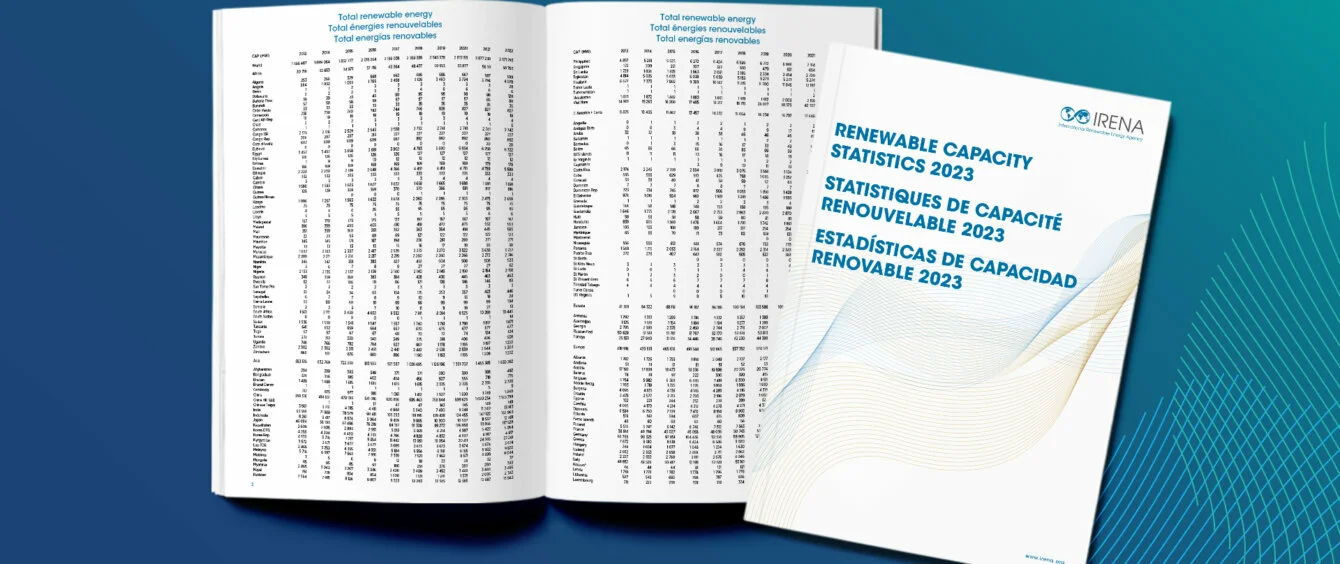In 2022, new renewable generation capacity additions increased compared with 2021, and stayed well above the long-term trend. According to the International Renewable Energy Agency (IRENA), renewable energy capacity worldwide increased by a record 295 GW, or 9.6%, in 2022, to reach 3,372 GW.
However, the geography of the energy transition shows large variations as some regions move ahead quicker than others. China took the top spot in terms of new capacity in 2022, deploying a further 141 GW. Asia overall accounted for almost half of all new renewable energy capacity.
Capacity in Europe and North America grew by 57.3 GW and 29.1 GW respectively. South America added 18.2 GW and Africa 2.7 GW. The Middle East saw a record 3.2 GW of new capacity commissioned, up 12.8% from 2021.
Renewables dominate new capacity, but fossil fuels still increasing
In terms of technology, solar leads the field by some margin, accounting for 191 GW of the new capacity, equivalent to 65%. This was followed by wind with 75 GW and then hydro power with 21 GW, two-thirds of which was commissioned in China.
Bioenergy rose by 7.6 GW, less than in 2021, while geothermal power continued to make very modest gains, rising by just 181 MW.
One of the most promising findings is that renewables dominate as a proportion of all new generating capacity, reaching a record 83% in 2022, up from 78% in 2021. This is gradually shifting the total energy mix in a more sustainable direction. In terms of total installed capacity, renewables’ share rose by almost two percentage points to 40.2% in 2022 from 38.3% the year before.
However, the energy crisis has had an impact and the trends are not all positive. Non-renewable energy capacity also expanded and in many cases at a higher rate than in previous years, IRENA found. In Europe, for instance, non-renewable energy capacity expanded contrary to the trend over most of the last decade. This in large part reflected a hiatus in fossil fuel and nuclear plant decommissioning amid concern over security of energy supply.
Capacity versus generation
Although the report does not include generation data, at the rates of capacity expansion described, hydropower remained the world’s largest source of clean power, followed by wind. Despite solar’s rapid expansion, low capacity factors mean that it comes in third, but capacity is expanding rapidly enough to narrow the gap with both wind and hydro.
For example, solar made up 31% of installed renewable energy capacity worldwide in 2022 and wind 27%, but, in 2021, the two fastest expanding power technologies accounted for 13.0% and 23.5% of global renewable energy generation respectively, and just 3.7% and 6.6% of total power generation.
Scandinavia takes lead in European onshore wind additions
As elsewhere in the world, wind and solar dominated Europe’s renewable energy additions.
Wind capacity rose by 18.59 GW, 4.26 GW of which was offshore. In the onshore sector, Scandinavia has emerged as a dynamic market with Sweden (+2,441 MW) and Finland (+2,357 MW) coming first and second in terms of new capacity, outpacing Germany (+2,143 MW) and Spain (+1,400 MW). Poland came in fifth with 1,020 MW.
Offshore, the UK led with 2.592 GW of new capacity, the Netherlands was second with 760 MW and Germany third with 342 MW.
Similarly, some smaller economies did better than larger ones in terms of solar deployment. The Netherlands last year won the crown for most solar PV capacity per person, and, with the largest new additions in Europe of 7,679 MW by the end of last year, it seems certain to retain the mantle. More populous Germany was second with 7,181 MW added in 2022, while Spain came third (+4,499 MW) and Poland fourth (+3,751 MW), ahead of France, Italy and the UK.
Industry organization Solar Power Europe, which calculated EU solar additions in 2022 at a higher level than IRENA, expects 53.6 GW of new capacity in 2023, according to its medium scenario, which would constitute yet another record.
